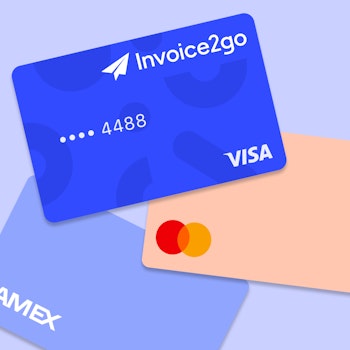
The 9-step tax checklist for full-time small business owners
Going through your 2021 taxes might look slightly different this year for various reasons. To ensure you’re taking advantage of every possible deduction and get ready for the April 18th deadline, we’ve put together a small business tax checklist to help you make the most of it.
Even if you’re usually the type of person who files on time, the past year might have thrown a few curveballs, so chances are you’ve got a few extra concerns to consider. Plus, a few new rules and changes might require different calculations.
Luckily, the changes for 2021 tax filing aim to help your business. Also, we’re going to explain everything in straightforward terms with this small business tax checklist.
2022 small business tax preparation checklist
Get ready to sharpen those pencils!
1. What’s your deadline?
The April 18th tax deadline applies mainly to sole proprietors, single-owner LLCs, freelancers, household employers, and C corporations. However, in Maine and Massachusetts, you can file taxes on April 19, 2022, due to a holiday on the 18th.
S corporations and partnerships need to file their business tax return for the 2021 tax year by March 15, 2022.
2021 had a lot of ups and downs for business owners, so you may not be ready to file tax paperwork just yet. If you need more time, know that you can apply for a tax-filing extension.
Just keep in mind that a tax extension only extends your filing deadline. You must still pay your estimated taxes on your business’s tax-filing deadline – which is either March 15, 2022, or April 18, 2022 – or the IRS will charge you a late fee.
Extensions give you six more months to file tax paperwork, and you must apply for an extension no later than your typical tax deadline. That means:
- Sole proprietorships, C corporations, and single-owner LLCs must apply for an extension by April 18, 2022, extending their deadline to October 17, 2022.
- Partnerships and S Corporations must apply by March 15, 2022, extending their deadline to September 15, 2022.
2. What forms do you need to file?
- Sole proprietorships, single-owner LLCs, self-employed contractors: Must file Schedule C in addition to a personal income tax return 1040. Refer to this IRS page for complete information on what forms to file based on your individual circumstances. There are additional forms to file if you have employees – both to the IRS and your employees or contractors.
- Partnerships/LLCs: Form 1065, Schedule K-1.
- C-Corps, LLCs taxed as corporations: Form 1120. An LLC with only one member who chooses to be taxed as a corporation must file Form 8832.
- S-Corps: Form 1120-S; Schedule K-1, if applicable.
3. Compile your records and receipts
For the next item on your small business tax checklist, here are all the documents you’ll need:
- Taxpayer ID Number (either SSN or EIN)
- A copy of your 2019 tax return
- Bank and financial statements
- Credit card statements
- Receipts for business expenses
- Balance sheet
- Payroll records
- Estimated tax payments
4. Organize your small business tax deductions and tax credit categories
The structure of your business significantly impacts how you file your taxes. If you started as a sole proprietorship, the good news is that you’re in the best position to change your business structure if another works better for your needs.
You could also choose:
- Partnership: For a business with two or more owners
- Limited Liability Corporation (LLC): Corporate protections at less expense
- S-Corporation: Incorporated with up to 100 shareholders, taxed as a partnership
- C-Corporation: Owners/shareholders taxed separately from the corporation
- Cooperative: A business owned/operated by its customers, run by a board
An important consideration when choosing a structure is who will be taxed and what that liability implies. As a sole proprietor, you are the business. You get all of the profits and enjoy the lowest tax rate – but you are responsible for all debts and taxes. In a partnership, you split the liability.
Each owner files for their portion of the business on their personal tax return with an LLC. Some states have additional requirements, so it’s wise to understand how your state operates from the get-go. S-corps are taxed like sole proprietorships or partnerships.
C-corps are taxed as a corporation, responsible for federal, state, and perhaps local taxes. You’ll file both individual and corporate taxes with this structure. Cooperatives share profits among members, who are responsible for listing cooperative gains on their personal income taxes.
When you’re learning how to file small business taxes, the structure you choose informs when and how you file. Different structures require different tax forms and may have different deadlines. You might file one tax return or split individual and corporate tax filings.
5. Deduct estimated tax payments
Many business owners make quarterly tax payments based on their projected business income for the year. If you’ve made these installments, you can deduct them from your total tax owing.
6. Do you need more time? File an extension.
If your tax deadline is approaching and you know you’re not going to be able to file on time, request an extension. You’ll need to file the extension before your taxes are due, and depending on your business structure, you might be required to pay any estimated taxes due at that time.
7. What happens if you can’t afford to pay your tax due amount?
2021 was a year of surprises, both fortuitous and unfortunate. For example, if you had a sudden surge in business, you might have miscalculated your estimated tax payments, leaving you with amounts owing.
If you have a tax liability for 2021 and can’t afford to pay it in one fell swoop, there are a few options to consider. Fortunately, the IRS will work with you to develop an equitable payment plan, which should help alleviate stress. Plus, once you’ve got an installment plan in place, you won’t pay interest on the amount you owe
Alternately, you could choose to make an Offer in Compromise, which is a way to lower your tax liability. You’ll need to apply for this, and there is a non-refundable filing fee of $205. If you currently have an installment plan in place, you need to keep paying it while the IRS considers your circumstances.
You can also submit a payment of 20% of the requested offer with the application, with the remainder payable as a lump sum payment or spread out over five or fewer payments.
Lastly, if you anticipate being able to pay your tax due amount but just need a little more time, you can request a temporary delay, which will keep the collectors at bay during the term of your agreement. You must contact the IRS directly to initiate a delay.
They may request that you fill out Form 433A or B and provide supporting documents to prove your case before they rule. If you are granted a temporary delay, you will still have to pay penalties and interest on the amount owing.
8. Consult a tax professional
We know that some business owners just LOVE doing their own taxes, but in a year like this, where nothing is as it was before, working with an accountant is probably a very good idea.
Ideally, you’ll want to choose a financial professional who has experience working with businesses like yours. You can do a lot of the preliminary work, of course, if you’re so inclined—but before you commit and send, you should verify that everything you’ve done is accurate.
This is especially critical this year, as there are so many new tax credits and deductions you might not have used in the past. As meticulous as you may be, there’s always the chance that something fell through the cracks.
If you’re concerned about the expense of hiring a CPA, consider that if your accountant has any insight or picks up on areas you’ve missed, you could potentially save yourself a lot of money.
If you don’t know about deductions or credits, you can’t benefit from them—and nobody from the IRS is going to call you up to point that out. It’s on you to make sure you’re leveraging every benefit that’s coming to you, and it’s to your advantage to use all the tools and expertise you have at your disposal.
Another advantage to having an accountant review your return is that they’ll be able to look at it with a critical eye, identify any red flags that might justify an audit, and give you the final thumbs-up to go ahead and file.
9. File your return
At last, the final item on your small business tax checklist. While you can still file a paper return, most returns are e-filed these days. If you’ve never e-filed before, there are a lot of benefits to consider:
- You’ll get immediate confirmation that your return was received
- You’ll probably get your assessment a lot faster
- If you have an amount owing, you can take care of it right away or make arrangements as needed.
Plus, with COVID closures, conventional mail systems have been, ahem, less than reliable over the past year. So if the deadline looms and you want to make sure your return gets where it’s supposed to be on time, e-file is your best bet, hands-down.
Additional tax season tips to help you next year
Congratulations! You made it through the past year (relatively) unscathed. We’ve all experienced big changes because of the pandemic, and no doubt you’re still recovering from some of them.
A record number of new small businesses were registered in 2021, representing more growth than we’ve seen in almost 20 years. Some were born of necessity, such as individuals starting home businesses because the companies they previously worked for shut down.
Others grew out of public need and demand, such as new distribution networks, delivery and logistics companies, eCommerce businesses, and domestic manufacturing of PPE to offset shortages and quality concerns in the global market.
If you are among these new business owners, you’re likely entering your first foray into business taxes—so it’s vitally important to get it right.
Invest in your business
Spending money on making your business better is always a good strategy. New technology, equipment, and even furniture are 100% deductible in the year it’s purchased, so if you’re looking for ways to reduce your tax burden and improve your business at the same time, these are good areas to invest in.
Be sure you’re taking advantage of as many of these deductions as makes sense to you. New computers or machines directly related to your business are just a couple of examples. For example, if you’re a podcaster, microphones, cameras, and software would all qualify, but speak to your accountant to determine what might apply to you.
Stay organized
Staying on top of your income and expenses are imperative in today’s fast-moving economy, and having the right tools makes it a snap.
If you’re an Invoice2go, a Bill.com company, user, you know how easy it is to maintain and organize the business information you need to file your taxes. From sending invoices to accepting online payments and tracking business expenses, there are plenty of easy and affordable ways to simplify day-to-day business accounting with Invoice2go. Plus, when your accountant—or the IRS—is looking for something specific, it’s just a matter of a few taps to bring it up.
We hope you’ve found our small business tax preparation checklist and tax tips helpful! Here’s wishing you good luck with your 2021 tax filing.
Related Articles

How to accept credit card payments on Invoice2go in 3 simple steps

Accept payments online via Apple Pay and Google Pay

Must-not-miss write-offs as you wrap up 2022 year-end finances

5 ways accepting credit and debit card payments helps your business stay resilient

4 easy ways to increase cash flow today

What is Small Business Saturday and why is it important?
The features and surprising benefits of a well-designed packing slip
